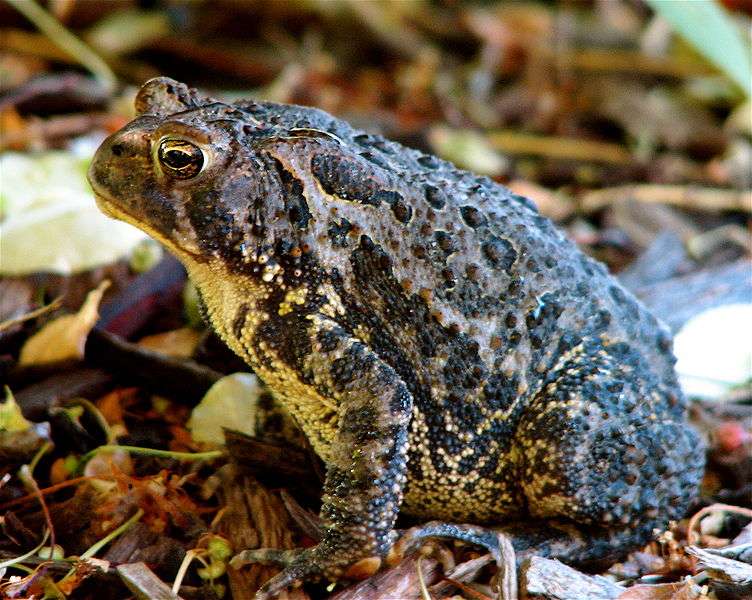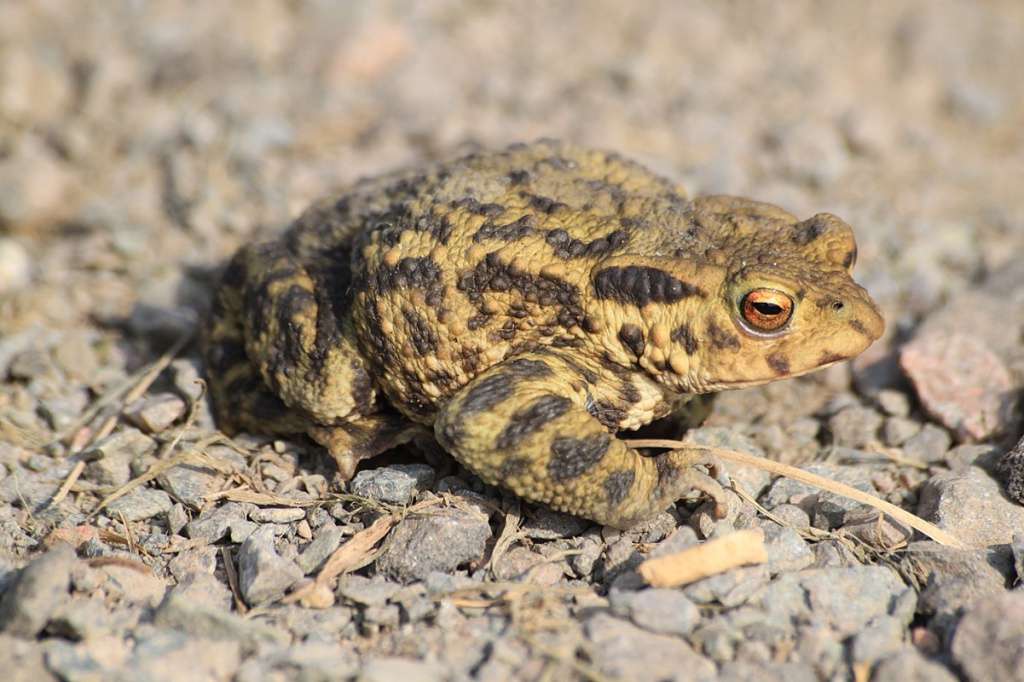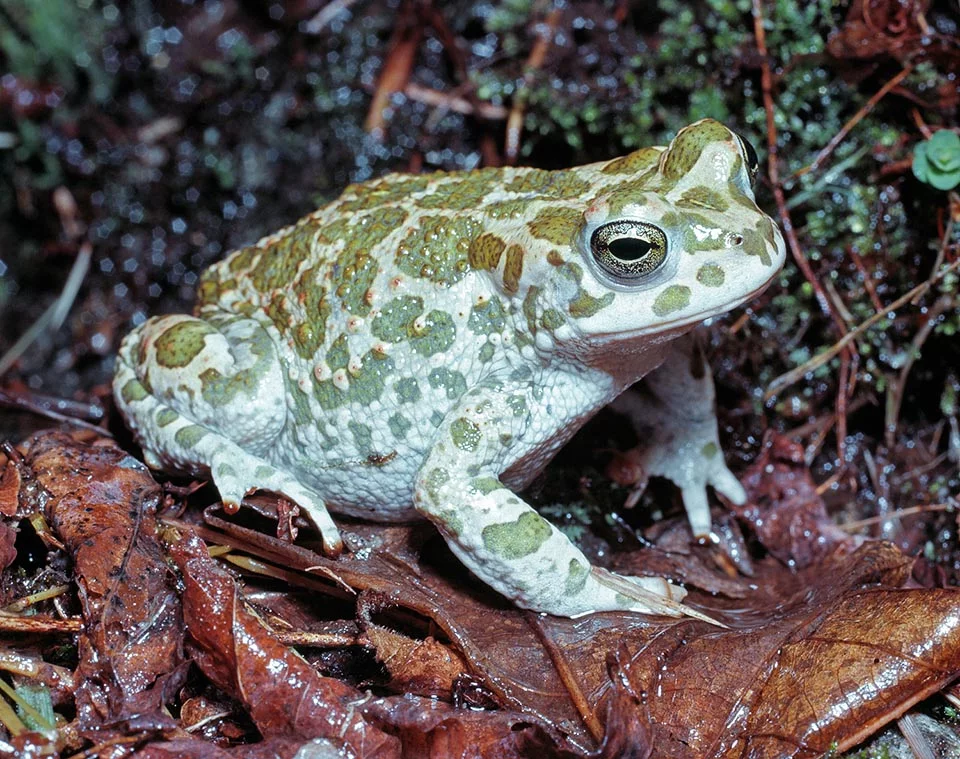
Only the Nearctic region of the world is home to the American toad, Anaxyrus americanus. They are widespread across a lot of North America. American toads have heavy bodies, short legs, and thick skin that is marked by warts. These warts might have red or yellow colouring. These toads have strong defense against many of their predators thanks to the many glands in the warty skin that emit a milky fluid that is toxic. This poison can make many animals very ill, but it only causes harm if it is swallowed or goes in the eyes.
Additionally, they need extensive vegetation for concealment and hunting areas. Of all toads, American toads have one of the most distinctive calls. Each of their prolonged trill sounds lasts for between four and twenty seconds. American toads to entice females for breeding use this cry. During the mating season, their calls become frenetic, loud, and continuous. American toads are carnivores as adults, but because tadpoles graze on water plants, they are classified as herbivores (algae).
Physical Description
The length of an American toad ranges from 51 to 90 mm (2.0 to 3.5 in), and the majority of them are brown or grey in appearance, while some can be reddish (brick red in the most extreme cases), olive, or tan. Tan or yellow patches that, in most cases, have randomly positioned black dots throughout the back frequently enhance their base hue. The middorsal is striped lightly all the way down. There are several dark marks on the light venter. Male American toads often grow smaller than females and get dark throats during breeding season due to their sexual dimorphism. These toads have dry skin that is heavily wart-covered. The largest of the dark areas on their back typically only has one or two warts.
On the tibia, there are larger warts. There is a bulging parotid gland behind each eye. Although totally isolated from the paratoids, a small spur frequently connects the postorbital ridges to them. Additionally, where their ranges intersect, American toads commonly hybridize with both Fowler’s toads and southern toads.

Geographic Distribution and Habitat
The American toad, the most widely dispersed species of the Bufonidae family in North America, is present in some areas of all but Florida’s southeastern states. Their distribution extends northward to southern Newfoundland, the Maritime Provinces, eastern Manitoba, and portions of Ontario and Quebec. Additionally, it spans the Dakotas, eastern Kansas, and the Midwest states up to the northeastern United States. Even as far as northeastern Texas and eastern Oklahoma, dwarf American toads can be found. American toads can be found in a variety of terrestrial settings, such as white pine-eastern hemlock forests and hardwood or pine hardwood. As long as the habitat has accumulated leaf litter, sandy or loamy soil for burrowing, damp hiding spots, and an abundance of food, these toads aren’t afraid of open fields and pastures or residential areas. To breed, they need small, fish-free bodies of water, which can be temporary ponds, ditches along highways, or the edges of lakes.
Reproduction
Although it lasts from March to July in most of their habitat, the breeding season for American toads begins in the Southeast in January or February. Males will congregate in choruses to call females to wetlands; they often call at night but also sing throughout the height of the season on warm, rainy days. The male’s cry is a lengthy, high-pitched, melodic bu-r-r-r-r that lasts for six to thirty seconds. He grabs the female behind her forelimbs when she chooses a partner, encouraging her to lay anywhere between 2,000 and 20,000 double, gelatinous strands of eggs.
The egg strings lay 3–12 days after being laid on vegetation or at the bottom up to 2-4 inches deep. Before developing into toadlets, tadpoles might take up to two months. They are capable of reproducing after two to three years.
Diet
American toads are carnivores as adults, but because tadpoles graze on water plants, they are classified as herbivores (algae). American toads in adulthood are omnivores. They consume a wide range of invertebrates, such as snails, beetles, slugs, and earthworms, in addition to insects. American toads have sticky tongues that they may shoot out to catch prey, unlike other toads that wait for their prey to come along and pounce on it. In order to consume greater food, they may also use their front legs. They take hold of their meal and put it in their mouths. A single American toad can consume up to 1,000 insects daily. Toads do not consume water; instead, they soak it up via their skin.
Setup for Keeping as Pet
As simple as it gets, creating a cage for an American toad. Choosing the right substrate and making it deep enough is probably the most crucial aspect of the entire setup. Here is a list of the things you’ll need till you give you some advice on how to get started. Minimum tank size: 10 g* Non-particulate substrate, Leaf debris (optional), Miniature water dish decorations, screen cover, Bottle with a thermometer and a hygrometer
Although toads don’t need much space, the more the better. Most frog lovers adhere to a straightforward rule: 10 gallons per frog. The American Toad is a good example of this. One toad may live in an aquarium of 10 gallons. Three or four fish can fit in a 30-gallon aquarium. But it’s also acceptable to use a 50-gallon aquarium for a single toad. The size is unrestricted. Oh, and don’t forget to add a screen lid to your container to prevent the toad from escaping.
A non-particulate substrate should be at least 2 inches deep in the tank’s bottom. It is advised to use a loose substrate, such as coconut fiber, because these toads enjoy burrowing. For more details on this subject, read the subsection below on substrate. To add another hiding area, spread leaf litter on top of the substrate. Put cork bark, branches, logs, or other hiding-place-friendly decorations. At one end of their enclosure, place a strong, shallow water dish and fill it with fresh water. Plants, real or fake, are welcome. Just keep in mind that because these toads enjoy burrowing, they could harm the roots of your live plants.
Table





